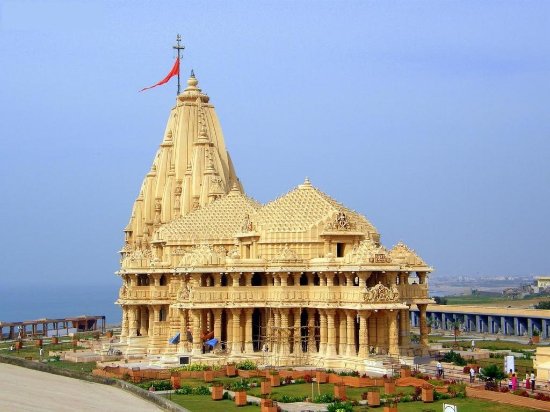I’ll never forget my first visit to Somnath temple. It was early morning, just as the sun was coming up over the Arabian Sea. I walked barefoot on the cool marble floors, the smell of incense in the air, and the sound of temple bells mixing with the crashing waves. Something felt different here compared to other temples I’d visited. It wasn’t just the beautiful architecture or the sacred atmosphere—it was something deeper, something that made me feel like I was standing on ground that had witnessed centuries of history.
As I stood there watching the morning prayers, an old priest noticed my curiosity. “You want to know the real story of Somnath?” he asked with a knowing smile. That’s when I began to understand—Somnath isn’t just another temple. It’s a symbol of resilience, a place that was destroyed not once, not twice, but many times, yet kept coming back. This is the story he shared with me, in simple terms that anyone can understand.
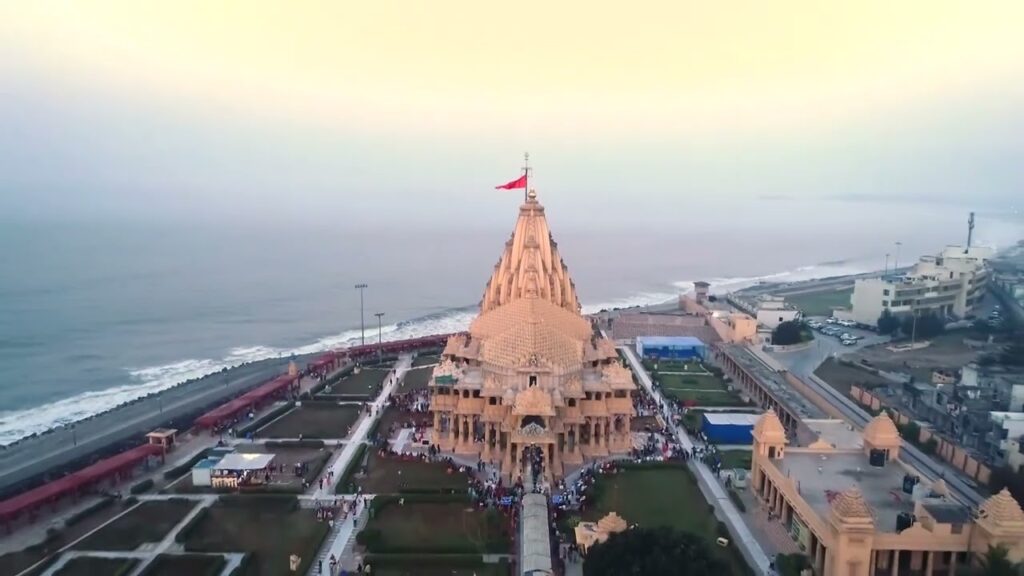
The Simple Story Behind Somnath
Long ago, before temples were built with stone and mortar, there was a legend about the moon. According to the story, the moon god (Chandra) had upset his father-in-law by favoring one wife over his other 26 wives. As punishment, he began to lose his light, getting dimmer and dimmer until he would eventually disappear completely.
Desperate to save himself, the moon god came to this spot on the western coast of India and prayed to Lord Shiva for help. He prayed so hard and for so long that Shiva finally appeared and lifted the curse. From then on, the moon would wax and wane in a regular cycle instead of disappearing forever.
To thank Shiva, the moon god built the first temple here. That’s why it’s called Somnath—”Soma” means moon, and “Nath” means lord or protector. So Somnath means “Lord of the Moon.”

How the Temple Was Built Over Time
The temple wasn’t built all at once. Different rulers added to it over hundreds of years.
First, it was said to be a simple structure made of gold. Then later, it was rebuilt with silver. After that, it was constructed with black stone. The most famous version—the one that Mahmud of Ghazni attacked—was built around the 10th or 11th century with beautiful sandstone.
The temple faced the west, toward the setting sun and the sea—unlike most other temples that face east. This was special because it showed the moon’s connection to the temple. The main tower (shikhara) was very tall and could be seen from far out at sea, helping sailors navigate.
Inside, there was the main shrine with the Shiva lingam (a stone symbol of Lord Shiva). Around it were many smaller shrines, courtyards, and beautiful carvings showing stories from Hindu mythology. The temple wasn’t just a place for worship—it was also a center of learning, art, and culture.

Why Somnath Was So Important
Somnath is one of the twelve Jyotirlingas—the most sacred Shiva temples in India. A Jyotirlinga isn’t just a statue; it’s believed to be a direct manifestation of Lord Shiva himself. Pilgrims consider visiting all twelve Jyotirlingas a deeply spiritual journey.
What made Somnath special among these twelve?
- It was one of the oldest and most famous
- Its location by the sea made it a natural stopping point for travelers
- It was rich and well-known, which unfortunately made it a target
- It represented the connection between the moon, the sea, and Lord Shiva
For centuries, pilgrims traveled from all over India to visit Somnath. They would come by land and by sea, bringing offerings and seeking blessings. The temple became wealthy from these donations, which unfortunately made it a target for invaders.

The Attacks: How Many Times Was Somnath Destroyed?
This is where the story gets painful but important. Somnath was attacked many times, but the most famous attack was by Mahmud of Ghazni in 1026 CE.
Who was Mahmud of Ghazni? He was a ruler from what is now Afghanistan who led many raids into India. He wasn’t interested in ruling India—he wanted the wealth of Indian temples.
The Famous 1026 Attack
In 1026, Mahmud of Ghazni came to Somnath with a large army. The local ruler, Bhimdev Solanki, tried to defend the temple with his army, but they were outnumbered.
What happened next is recorded in history books:
- Mahmud’s army broke through the temple defenses
- They looted all the gold, silver, and jewels
- They destroyed the main Shiva lingam
- They took away elephants loaded with treasure
- Some accounts say 50,000 people were killed trying to defend the temple
After the attack, Mahmud took the treasure back to his capital in Ghazni (in present-day Afghanistan). Legend says he took so much gold that it took hundreds of camels to carry it all.
But here’s something important to understand—Mahmud didn’t destroy the entire temple. He damaged the main shrine and took the wealth, but parts of the temple remained standing. The belief that he destroyed it completely is a simplification of what really happened.

How Many Times Was Somnath Attacked?
There’s some confusion about exactly how many times Somnath was destroyed. Some people say 16 times, but historians don’t all agree on this number.
What we know for sure:
- Mahmud of Ghazni attacked in 1026
- It was attacked again in the 13th century by Muslim rulers from Delhi
- It was damaged multiple times over the centuries
- The temple was in ruins for long periods
The “16 times” figure comes from later stories and may be symbolic rather than exact. What’s certain is that Somnath was attacked repeatedly because of its wealth and religious importance.
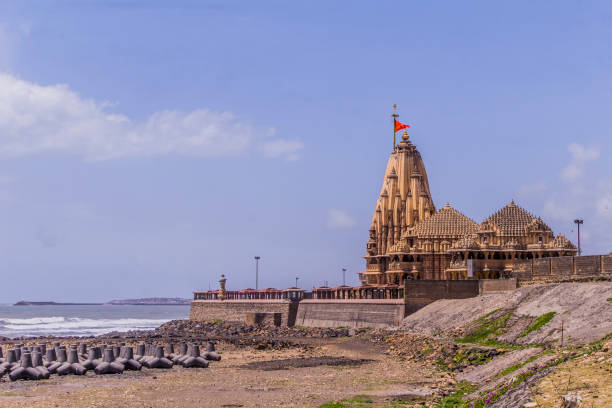
What Happened After the Attacks?
Here’s the amazing part of the Somnath story—every time it was damaged, someone rebuilt it.
After Mahmud’s attack:
- Local Hindu rulers repaired what they could
- The temple continued to be a place of worship, though in a damaged state
- Pilgrims kept coming, even if the building wasn’t complete
Over the centuries:
- In the 12th century, it was rebuilt by a local king
- In the 13th century, it was damaged again but repaired
- Even during Muslim rule, the temple saw periods of restoration
- By the 16th century, the temple was in ruins again but the site remained sacred
What’s remarkable is that even when the main temple building was destroyed, the site itself remained sacred. People would worship at the location, sometimes with simple structures or even just at the spot where the lingam had been.
The Stones of Somnath
The temple was built with special stones that came from nearby areas:
- Sandstone: The main building material, a golden-yellow stone that glowed in the sunlight
- Marble: Used for some decorative elements and later reconstructions
- Black stone: Used in earlier versions of the temple
The sandstone was perfect for carving intricate designs. If you look closely at the carvings, you can see detailed scenes from Hindu mythology, geometric patterns, and images of daily life from centuries ago.
One interesting fact: the temple was built without using any cement or mortar. The stones were cut so precisely that they fit together perfectly. This is why parts of the old temple still stand today, even after all the damage it suffered.
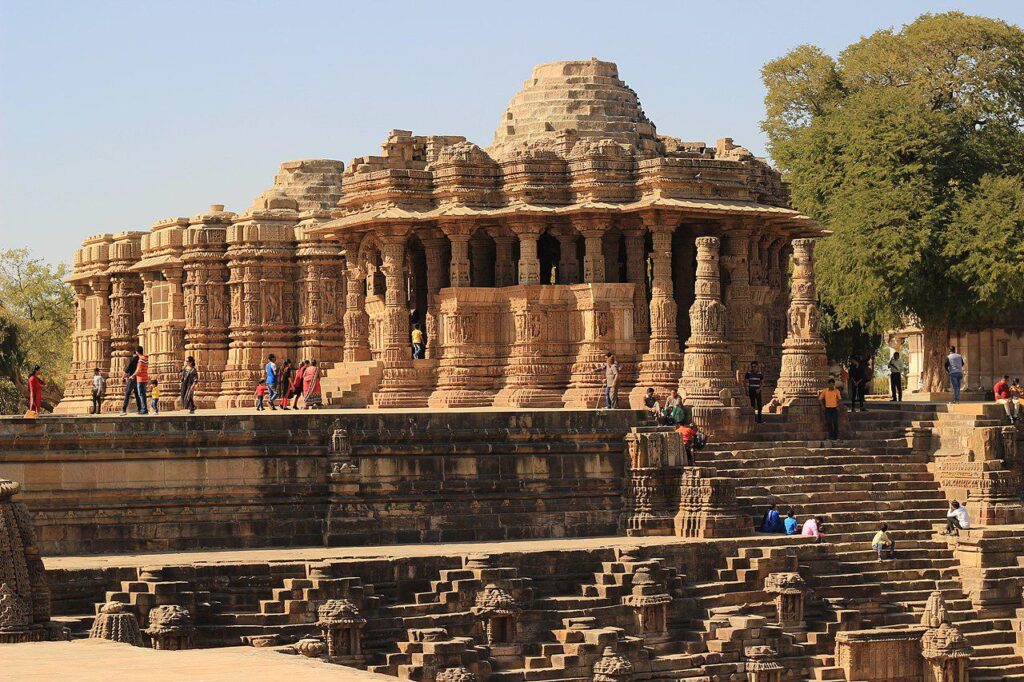
Why Was Somnath Targeted So Many Times?
Several reasons made Somnath a target:
- Wealth: Temples in India were often very rich, with donations of gold, silver, and jewels over centuries
- Location: Being on the coast made it accessible to invaders coming by sea
- Religious significance: Destroying important religious sites was a way to show power over the local people
- Visibility: The tall tower could be seen from far away, making it a clear target
It’s important to understand that temple destruction wasn’t unique to Somnath or even to India. Throughout history, religious sites have often been targeted during wars and conquests. What makes Somnath special is how many times it was rebuilt despite the destruction.
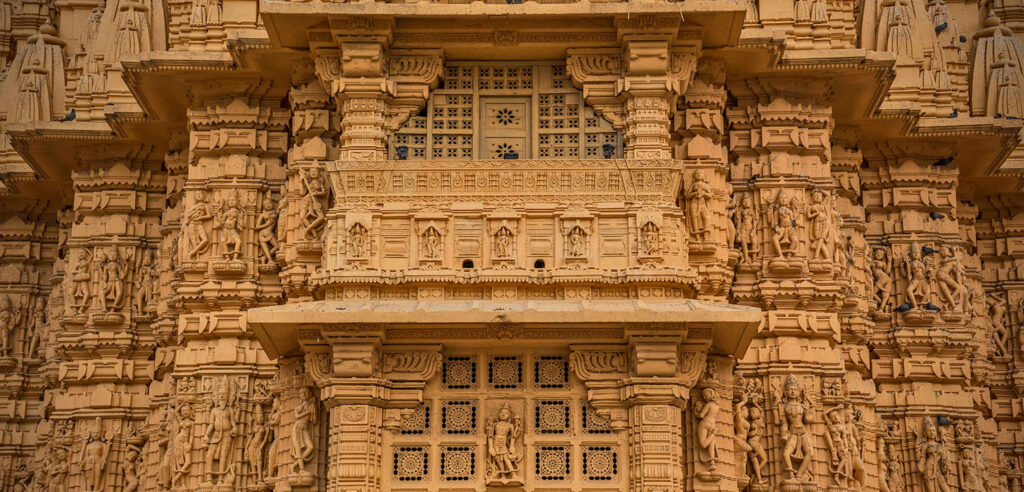
The Modern Rebuilding of Somnath
After India gained independence in 1947, there was a movement to rebuild Somnath Temple. The idea came from Sardar Vallabhbhai Patel, one of India’s founding fathers.
Why rebuild it now?
- To restore an important piece of India’s cultural heritage
- To show that India could rebuild what had been destroyed
- To give pilgrims a proper place to worship at this sacred site
The rebuilding began in 1950. They didn’t just copy the old temple—they used traditional methods to build a new one that honored the past. The chief architect was Prabhashankar Sompura, whose family had been temple architects for generations.
Important facts about the modern temple:
- It was built using the same Māru-Gurjara architectural style as the original
- No modern materials like steel or cement were used
- Traditional artisans carved all the stone by hand
- The main tower is 30 meters tall
- It was completed in 1951 and opened by President Rajendra Prasad
The most emotional moment came when the new Shiva lingam was installed. They didn’t make a new one—they used an ancient lingam that had been preserved through the centuries, connecting the new temple to its ancient past.
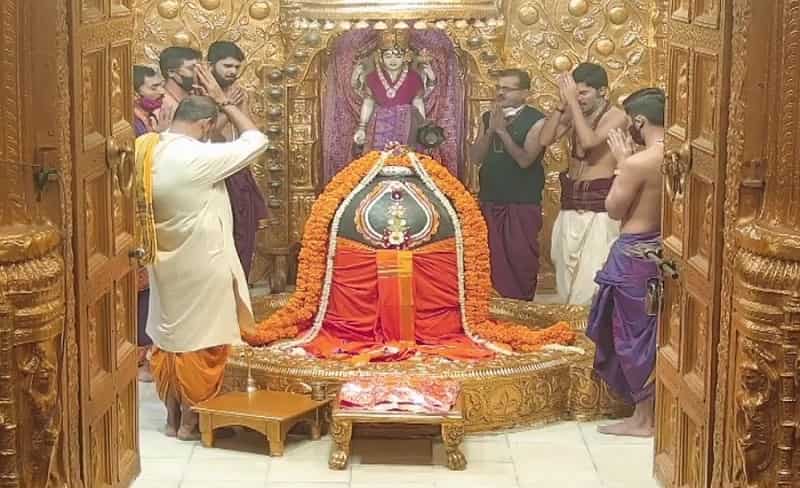
What Makes Somnath Special Today
When you visit Somnath today, you’re seeing more than just a beautiful temple. You’re standing at a place that represents:
- Resilience: The ability to rise again after being knocked down
- Faith: The unbroken connection to the divine that survived centuries
- Cultural continuity: The living tradition that connects modern India to its ancient past
- Hope: The belief that what is broken can be made whole again
During my visit, I watched as pilgrims from all over India came to worship. Some were elderly people who had dreamed of visiting Somnath their whole lives. Others were young children seeing the temple for the first time. All of them carried with them the weight of history, even if they didn’t know all the details.
The Evening Aarti: Where History Comes Alive
The best time to visit Somnath is during the evening aarti (prayer ceremony). As the sun sets over the Arabian Sea, priests perform rituals that have changed little in centuries.
What happens during the aarti:
- Oil lamps are lit and offered to the deity
- Priests chant ancient hymns
- Bells ring continuously
- Devotees sing along, some with tears in their eyes
- The sound of the sea mixes with the sound of prayer
During one evening aarti I attended, an elderly man next to me whispered, “Every time they destroyed this temple, someone rebuilt it. That’s why we’re here today—not just to worship, but to remember that nothing can destroy our faith.”
As I watched the lamps reflected in the sea, I understood what he meant. Somnath isn’t just about the past—it’s about the present and future too. It’s a reminder that even when things seem broken beyond repair, there’s always a way to rebuild.
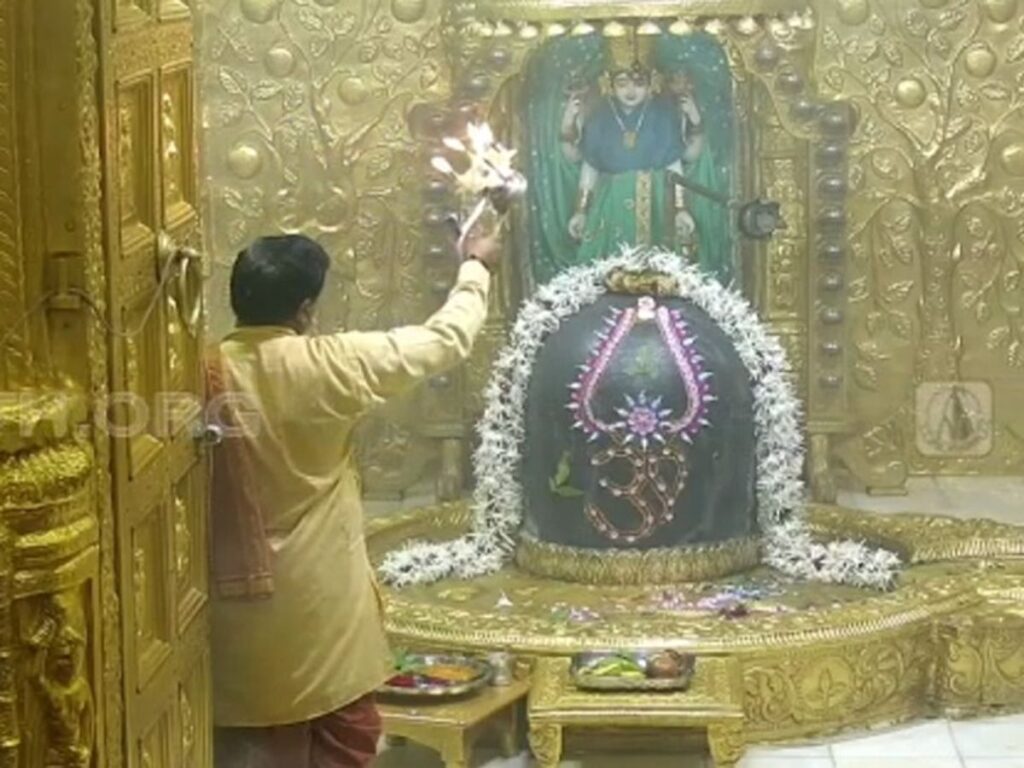
Common Misunderstandings About Somnath
There are some things people often get wrong about Somnath:
- “Mahmud destroyed it completely”: He damaged it severely and took the wealth, but parts remained standing
- “It was destroyed 16 times exactly”: The number 16 is symbolic; historians debate the exact number
- “It was the only temple attacked”: Many other temples were also targeted during this period
- “It was only attacked for religious reasons”: Wealth was a major factor in these attacks
Understanding these nuances helps us see history more clearly—not as simple stories of good versus evil, but as complex events with multiple causes and perspectives.
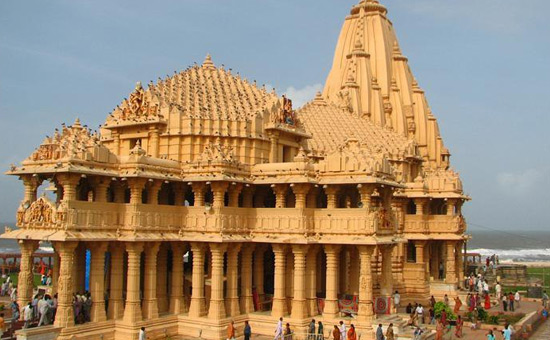
Why Somnath Matters Today
In today’s world, Somnath has special meaning. It’s not just a religious site—it’s a symbol of:
- Cultural resilience: How traditions can survive even when attacked
- Unity: People from all over India come here, regardless of their background
- Peaceful coexistence: The temple stands as a reminder that faith can endure without hatred
- Historical awareness: It helps us understand our past to build a better future
During my visit, I spoke with a young student who had come from Mumbai. “I used to think history was just names and dates,” she told me. “But standing here, I feel connected to something bigger than myself. It’s not just about what happened—it’s about how we respond to what happens to us.”
What to See When You Visit Somnath
If you ever get the chance to visit Somnath, here’s what not to miss:
- The main temple: Notice the beautiful carvings on the walls
- The old temple ruins: Located nearby, showing what’s left of earlier versions
- The sea-facing entrance: Where the original temple welcomed pilgrims arriving by boat
- The museum: Shows artifacts from different periods of the temple’s history
- The evening aarti: Best experienced from the sea-facing side of the temple
Don’t rush through your visit. Sit quietly for a while and let the atmosphere sink in. Feel the sea breeze, listen to the waves, and imagine all the people who have stood in this same spot over the centuries.
The Real Miracle of Somnath
The most amazing thing about Somnath isn’t how many times it was destroyed—it’s how many times it was rebuilt. Each time someone decided to restore what had been broken, they were making a statement: “This place matters. Our faith matters. Our culture matters.”
During my visit, I met a craftsman who had worked on the modern temple. His grandfather had worked on earlier restorations, and his great-grandfather had worshiped here when it was in ruins. “We don’t rebuild temples just to have buildings,” he told me. “We rebuild them to show that our spirit can’t be broken.”
As I left Somnath that day, the waves continued to crash against the shore, just as they had for thousands of years. The temple stood tall against the setting sun, a silent witness to history. And I understood why this place continues to matter—not because of what was lost, but because of what was restored.
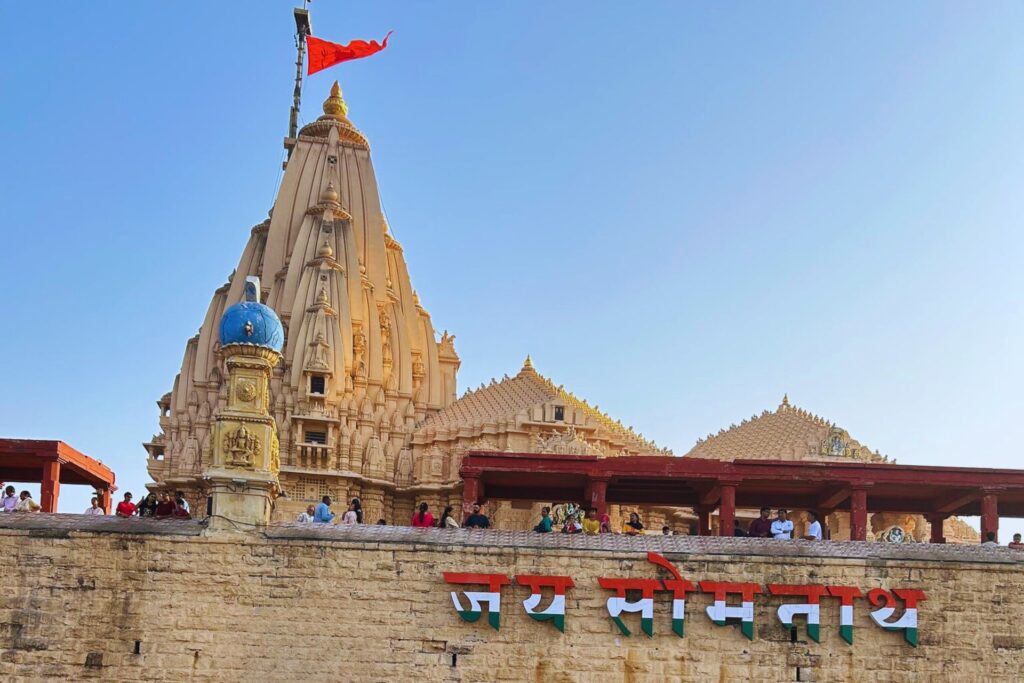
Visiting Somnath Today: Practical Tips
If you’re planning to visit Somnath, here’s what you should know:
- Best time to visit: October to March (cooler weather)
- How to get there: Nearest airport is in Diu (about 90 km away); nearest major train station is Veraval
- What to wear: Modest clothing (cover shoulders and knees)
- When to go: Early morning for peaceful darshan (viewing of the deity); evening for the beautiful aarti ceremony
- Don’t miss: The sound and light show in the evening that tells the story of Somnath
Remember that this is an active place of worship, not just a tourist attraction. Be respectful of prayer times and rituals.
The Living Legacy of Somnath
Somnath teaches us that destruction doesn’t have to be the end of the story. Throughout history, people have faced loss and devastation, but they’ve also shown incredible strength in rebuilding what was broken.
As I write this, I can still feel the cool marble beneath my feet, hear the chanting mixing with the sound of the sea, and see the lamps glowing as the sun set over the Arabian Sea. These aren’t just memories—they’re reminders of something powerful and enduring.
The real story of Somnath isn’t about invaders or destruction—it’s about the people who kept coming back, who kept rebuilding, who refused to let their faith be destroyed. In a world that often feels divided, Somnath stands as a testament to the human spirit’s ability to heal, rebuild, and move forward while honoring the past.
When you visit Somnath, you’re not just seeing a temple—you’re connecting with centuries of resilience, faith, and hope. And that’s a story worth remembering, no matter where you come from or what you believe.

Frequently Asked Questions about Somnath Temple
1. Where is Somnath Temple located?
Somnath Temple is located in Prabhas Patan, near Veraval in Gir Somnath district, Gujarat, India.
2. Why is Somnath Temple famous?
It is the first among the 12 Jyotirlingas of Lord Shiva and is considered one of the most sacred pilgrimage sites in Hinduism.
3. Who built the Somnath Temple?
The original temple is believed to have been built by the Moon God (Chandra) in gold, rebuilt by Ravana in silver, by Lord Krishna in wood, and later by King Bhimdev in stone. The present temple was reconstructed in 1951 by Sardar Vallabhbhai Patel’s initiative.
4. How many times was Somnath Temple destroyed?
Somnath Temple was destroyed and rebuilt 17 times by various rulers, including Mahmud of Ghazni, Alauddin Khilji’s generals, and others.
5. What are the temple timings?
Somnath Temple is open from 6:00 AM to 9:30 PM daily. The Aarti timings are 7:00 AM, 12:00 PM, and 7:00 PM.
6. Is photography allowed inside Somnath Temple?
No, photography and videography are strictly prohibited inside the temple premises for security reasons.
7. How can I reach Somnath Temple?
- By Air: The nearest airport is Diu (65 km).
- By Train: The nearest railway station is Veraval (7 km).
- By Road: Somnath is well connected by roads from Ahmedabad, Rajkot, and Junagadh.
8. What is the best time to visit Somnath Temple?
The best time to visit is October to March, when the weather is pleasant. Pilgrims also visit during Maha Shivratri and Shravan month for special rituals.
9. Is there any dress code for visitors?
There is no strict dress code, but devotees are advised to wear modest and traditional clothes while visiting the temple.
10. What are nearby attractions to Somnath Temple?
- Bhalka Tirth (where Lord Krishna was struck by an arrow)
- Triveni Sangam (confluence of three holy rivers)
- Gir National Park (home of Asiatic lions)
- Junagadh Fort and Diu Island

